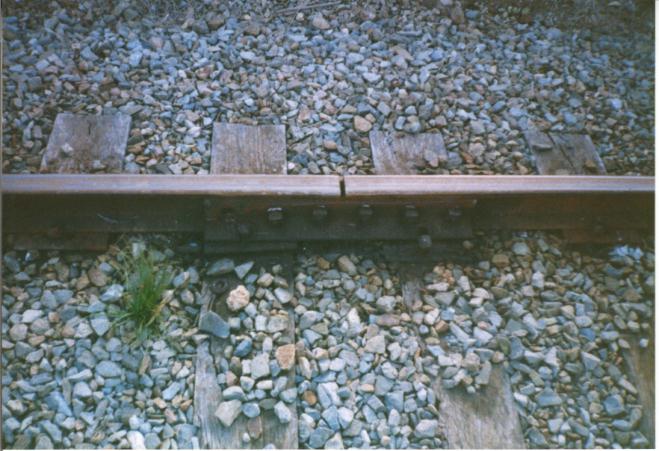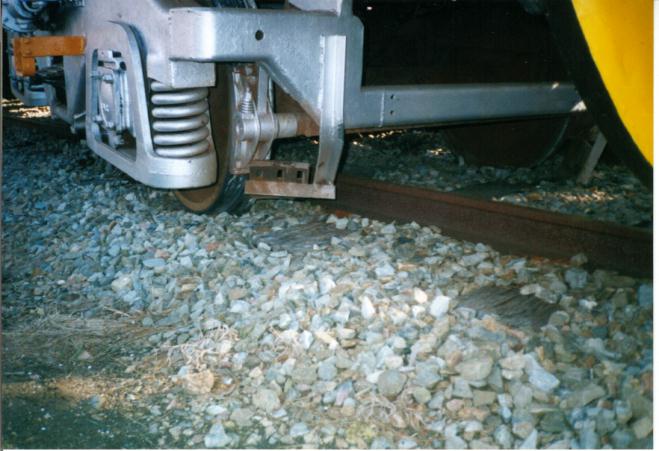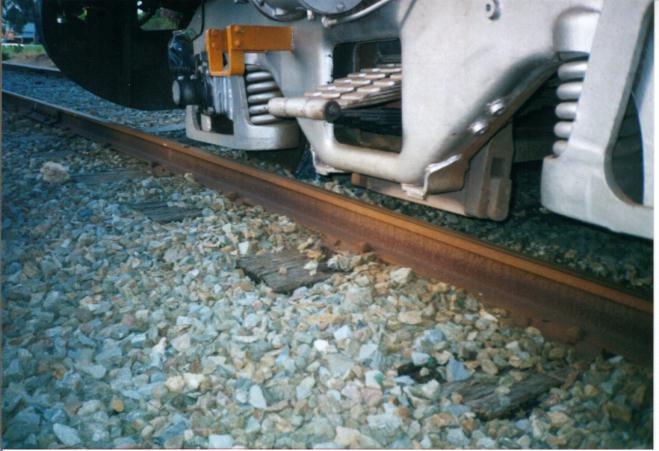
This piccy shows us on our way. The car was full, all seats taken and a few standing. Lots of decorations and conversation. Behind the camera are some tables with food and drinks (tables in front of some exterior doors)
| Where | Broad gauge tourist railway in South Australia |
| When | a Sunday in 2001, shortly after lunch on return journey |
| Who | The diesel railcar was chartered for a birthday party |
| What | A historic Red Hen |
| Why | Track spread (my conclusion. See details below) |
| How? | See How section below. |
| Casualties?
Injuries? |
None. Person could have had boiling water spilt on him, but avoided. |

This piccy shows us on our way. The car was full, all seats taken and
a few standing. Lots of decorations and conversation. Behind the camera
are some tables with food and drinks (tables in front of some exterior
doors)




